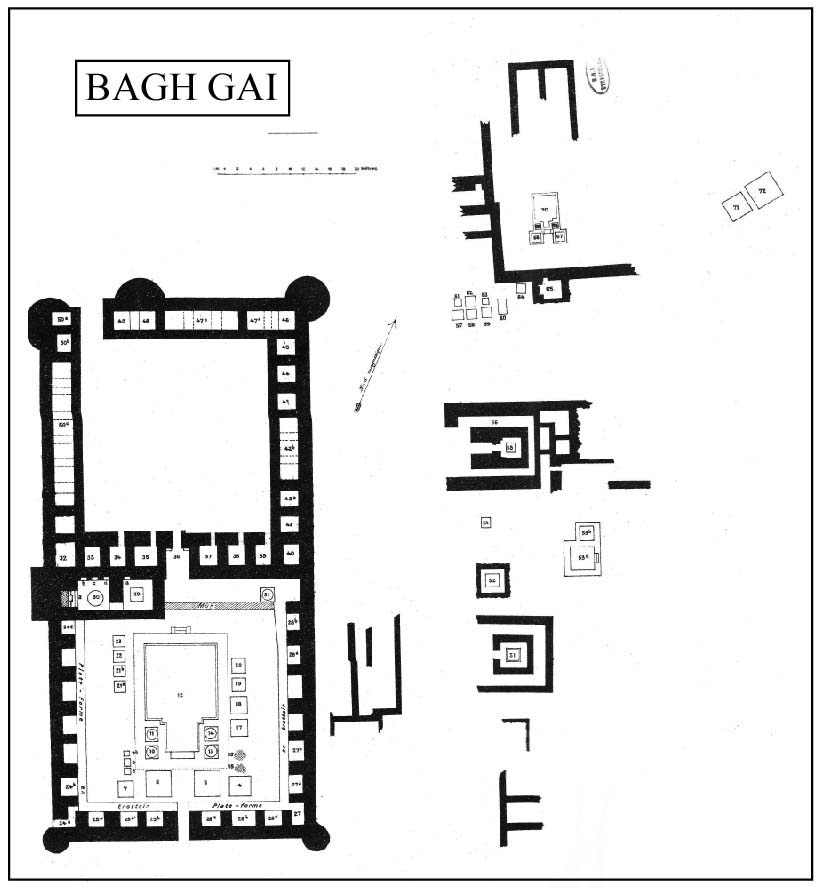Bāgh Gaï
The main enclosure of Bāgh Gaï (abbreviation: B) is organised in two symmetrical parts adjoining each other: the stūpas Courtyard to the southeast and the monastery to the northwest. To the east are other rubble belonging to outlying monuments. Beyond this, a smaller enclosure of three stūpas must have been, in view of its orientation, independent of the main site. To the west is a third, even smaller site. Finally, a last one revealed three stūpas and a small monastery.
The main enclosure is accessed from the south-east of the plateau, where a staircase (or ramp) must have been built. The two corners of the enclosure are consolidated by solid towers, certainly a mode brought by the Western Turks according to Barthoux. The centre of the courtyard is occupied by the main stūpa B 12, whose staircase is opposite the gate. It is flanked by four symmetrical stūpas in pairs. Another row of stūpas lines up frontally; two more side rows were interrupted during construction. All around, on three sides, wide and deep chapels open onto the courtyard. The back wall borders the monastery, which is about the same size as this area. It is an uninterrupted series of cells of uniform depth but varying widths. The north and west sides are destroyed. The courtyard of the monastery is neither paved nor plastered with stucco, but flattened. Its entrance gate, located in the northwest corner, is flanked by two towers. Another imposing tower consolidates the northern corner of the enclosure.
To the east are walls which the excavator tells us he did not see fit to clear. Beyond this is vihāra B 51, remarkable for being surrounded by a double enclosure which, seen from the outside, has the appearance of a stūpa. A similar one is found in B 56. Between them are isolated stūpas which appear independent. Towards the north there are important buildings, but they are completely destroyed. All that remains is an enclosure containing a two-staircase stūpa, each flanked by two stūpas built on the terrace. Outside the enclosure, seven small stūpas are lined up side by side. There is no doubt that the space between these monuments must have been built, but the stripped ground shows nothing of this. To the east of B 51, the discovery of interesting figurines suggests that there must have been important constructions. It should be noted that stūpa B 13 revealed schist bas-reliefs. According to J. Barthoux, this is one of the only works with K1 where this stone is encountered.
Perspective of the plan of Bāgh Gaï drawn by J. Barthoux (Barthoux, 1927) and the current state of the site from Google Earth satellite imagery.

